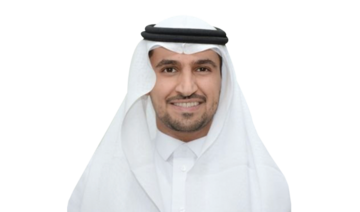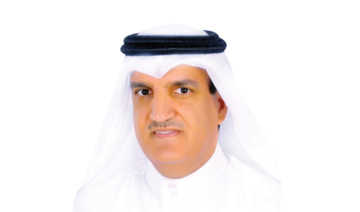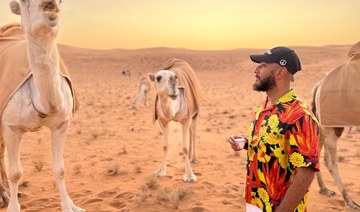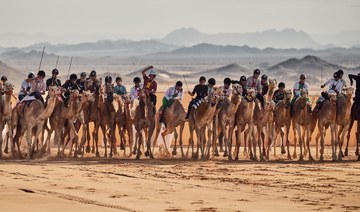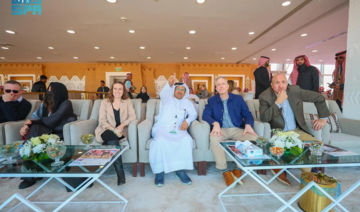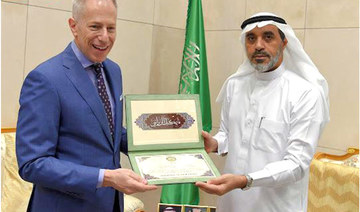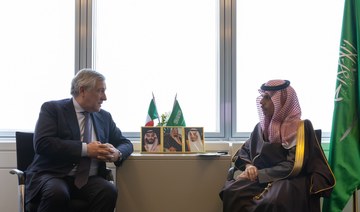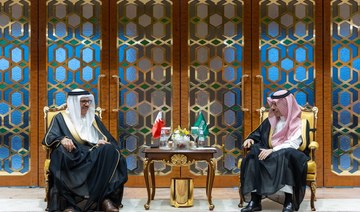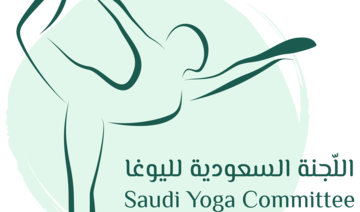Dr. Mohammed bin Ali Al-Hayaza was recently appointed a board member of the Education and Training Evaluation Commission.
He obtained his bachelor’s degree in chemistry from KSU. He did his master’s and Ph.D. in chemistry from Boston University in 1988 and 1992 respectively.
Al-Hayaza has been the president of Alfaisal University since March 1, 2015. He also served as a member of the Shoura Council for nearly 20 month starting in 2015. He served as the health minister from December 2014 to January 2015.
Prior to joining Alfaisal, Al-Hayaza served as the president of Jazan University from 2007 to 2014.
He served as the vice president for postgraduate studies and research at King Khalid University (KKU) from August 2002 to Nov. 23, 2007. From April 2003 to November 2007, he worked as a professor at the KKU’s chemistry department.
During his tenure at KKU, he established the College of Engineering and the College of Computer Science and served as the acting dean of both colleges until his promotion to the vice president for postgraduate studies and research in 2002.
Al-Hayaza began his career at King Saud University (KSU) in 1992 and left the KSU in 1999 as dean of the College of Education.
In 1999, the King Khalid University (KKU) appointed him dean of the College of Science.
From April 2003 to November 2007, he served as a professor at the department of chemistry in KKU.
From October 1999 to September 2002, Al-Hayaza served as dean of the College of Science at KKU. Al-Hayaza also worked as the acting dean of the College of Engineering from June 2001 to August 2002. He served as the dean of College of Education at KSU’s Abha branch from May 1997 to September 1999.
Mohammed bin Ali Al-Hayaza, Saudi Education and Training Evaluation Commission board member
https://arab.news/6yg79
Mohammed bin Ali Al-Hayaza, Saudi Education and Training Evaluation Commission board member
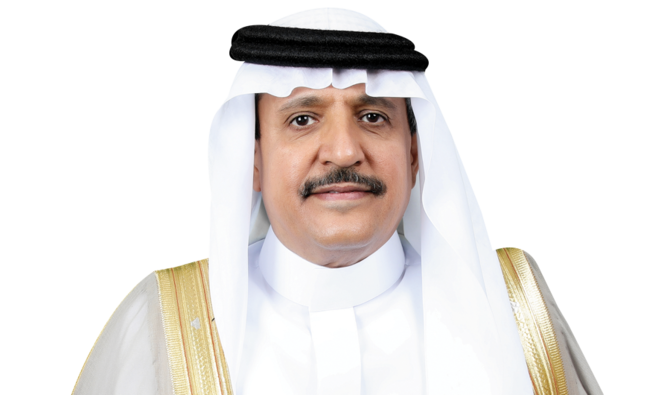
Saudi, UAE and Qatar secure wins on second day of AlUla Camel Cup
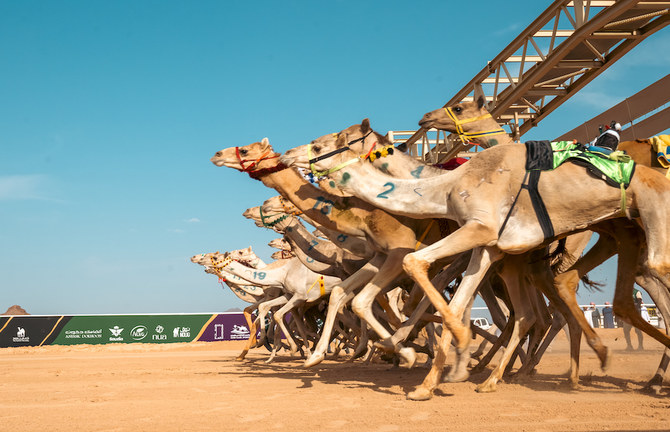
- Minister of Interior’s entry takes first race in the Hagayeg category
ALULA: Saudi Arabia, the UAE and Qatar provided the big winners on Day 2 of the second annual AlUla Camel Cup.
Held in unseasonably hot conditions, Thursday’s competition consisted of two 5 km categories, the Hagayeg and the Lagaya, with two races run in each.
Saudi Arabia’s Minister of Interior Prince Abdulaziz bin Saud bin Naif won the first Hagayeg race, much to the delight of spectators.
The Prince’s camel, aptly named AlUla, won in a time of 5 minutes 59.3 seconds. In the second Hagayeg race of the day, Shart, owned by Emirati Mohammed Al-Kutbi, took first place in a time of 5:57.8.
The day’s total prize pool of $6.83 million was split equally between the two categories.
Winners in each of the races received $870,000, second-place finishers earned $266,666, and those in third place received $133,333. The balance of the prize pool was distributed among the other finishers.
The event was organized by the Royal Commission for AlUla as part of the AlUla Moments calendar, in partnership with the Saudi Camel Racing Federation.
The 2024 AlUla Camel Cup offers spectators and participants a new and more expansive experience after the inaugural edition in March last year.
This year, designated Year of the Camel by the UN and the Ministry of Culture, the event pays homage to the desert animal that is so integral to the Kingdom’s heritage.
“The AlUla Camel Cup attracts the best riders and the best camels throughout not just the region, but the world,” said Mahmoud AlBalawi, executive director of the SCRF. “Qualification for the AlUla Camel Cup is deliberately challenging, with 11 camel races taking place under the federation’s jurisdiction throughout the season to qualify for this illustrious competition.”
AlBalawi said that the Saudi Camel Racing Federation’s programs “target all corners of Saudi Arabia in a bid to continue to grow and improve the cherished sport of camel racing. There are more than 50 camel racing tracks across the country, including the elite AlUla venue where the AlUla Camel Cup takes place.”
RCU’s chief sports officer, Ziad Al-Suhaibani, praised the participants and said: “The AlUla Camel Cup reflects the importance of camel racing as a symbol of the Kingdom’s heritage and culture.”
While the heritage sport dates from the seventh century, the event this year includes a more contemporary setup that caters to all the family. There are opportunities to take camel selfies, sample camel smoothies or listen to live folk music by local performers.
The final races take place on Saturday.
US Embassy marks 248th Independence Day with shared US-Saudi vision for space exploration
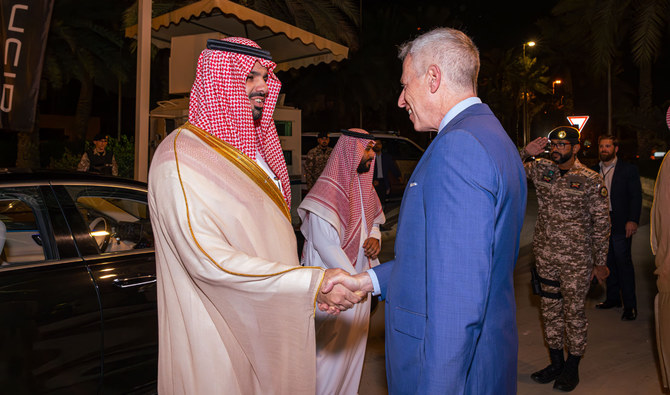
- Ambassador Michael Ratney welcomes hundreds of Saudi guests to space-themed Riyadh reception
RIYADH: The US Embassy in Riyadh celebrated the 248th anniversary of Independence Day on Thursday with a reception hosted by US Ambassador Michael Ratney.
The ambassador welcomed guest of honor Prince Faisal bin Abdulaziz bin Ayyaf, Riyadh Region mayor, along with Saudi officials, and hundreds of Saudi guests, as well as visitors from Washington, including members of the US Congress.
The space-themed Independence Day reception served as a symbolic celebration of the future of the US-Saudi cooperation in space, highlighting the profound benefits and possibilities of space exploration, research, and commercial development.
Ratney said the theme reflects the “shared ambition of the United States and Saudi Arabia to embrace opportunities in space, positioning both countries as pioneers in this frontier of innovation.”
The event evoked nostalgia for past achievements, such as the 1969 moon landing, while emphasizing ongoing advancements in space sciences, particularly commercial space exploration.
Ratney highlighted Saudi pioneers in space travel, such as Prince Sultan bin Salman, and astronauts Rayyanah Barnawi and Ali Al-Qarni.
An art installation, “Museum of the Moon,” by artist Luke Jerram, featured NASA’s high-definition imagery of the lunar surface.
According to the US Embassy’s statement, the collaboration between the US and Saudi Arabia continues to advance shared interests in diplomacy, commerce, culture, and more.
The US remains dedicated to enhancing shared US-Saudi shared interests in security and in fostering prosperity in the region, while also exploring new avenues for partnerships in areas such as the arts, education, entertainment, and tourism, it said.
Both countries are poised to explore further cooperation, including potential joint ventures in space, reflecting a vision for an even stronger US-Saudi relationship in the future, the statement added.
Saudi, Cypriot foreign ministers discuss relations
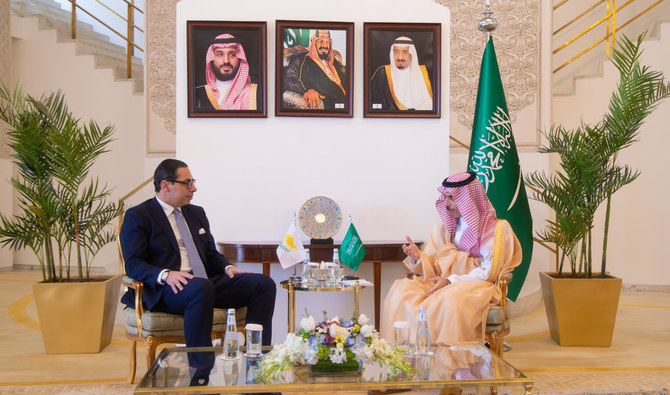
Saudi Minister of Foreign Affairs, Prince Faisal bin Farhan received his Cypriot counterpart, Dr. Konstantinos Kompos, at the ministry’s headquarters in Riyadh on Thursday.
During the meeting, the ministers reviewed the advanced bilateral relations between the Kingdom and the Republic of Cyprus, and ways to promote them in a variety of fields.
They also discussed ways to increase bilateral coordination on issues of common interest and reviewed international developments.
New initiative to train young innovators in nanotechnology
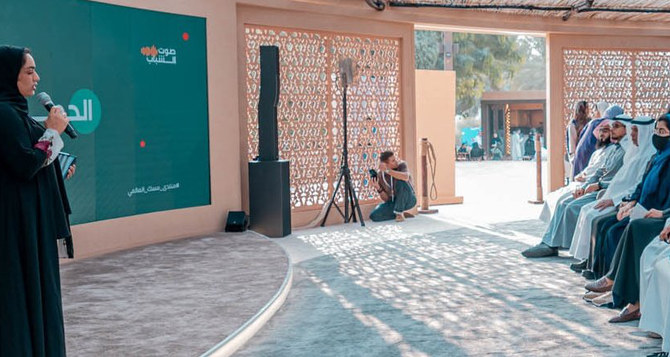
- Program structured in 3 phases for Saudi graduates and entrepreneurs
RIYADH: The Nanotechnology Association, supported by the Misk Foundation, is set to launch the Nanohub Program, aimed at inspiring and equipping the next generation for careers in the sector to help support a brighter future and a thriving economy.
Nanohub, a nonprofit initiative, is structured in three phases to train Saudi graduates and entrepreneurs aged between 20 and 26. It provides workshops and sessions to develop personal skills, gain hands-on experience with nanotechnology, and receive guidance from industry experts.
The program partners with leading local and international organizations to ensure participants are prepared for the workforce.
Nanotechnology is expected to transform business and innovation in various sectors. Understanding its economic impact and the potential benefits of partnerships are of crucial importance for young entrepreneurs.
The program aims to equip participants with the skills and knowledge needed to excel in nanotechnology and inspire them to drive innovation in their industries.
The first phase of the program will focus on soft skills and leadership development. It is scheduled for three days, starting on April 28.
The second phase, which starts on May 5, explores applications of nanotechnology. It runs for five days, covering topics like the fundamentals of nanotechnology, its use in medicine, energy, and renewable energy, as well as sustainability.
The third phase, beginning on May 12 and ending on May 16, provides hands-on laboratory experience through a series of sessions called “Shadowing and Lab Tours.” This phase has two key tracks: the Shadowing Track and the Lab Tours Track.
The Lab Tours Track will give participants an in-depth look at cutting-edge nanotechnology research. They will visit world-class laboratories where nanotechnology innovations are being developed.
Participants will observe advanced equipment and complex techniques central to nanotechnology research. They will see live experiments and dynamic processes that reveal the workings of nanotechnology. This track is more than just a tour as it enhances understanding by connecting academic concepts to real-world applications, giving participants a closer look at the research and development process.
The Nanohub Program is “a transformative initiative designed to elevate the skills and competencies of graduates and new hires with STEM (science, technology, engineering and mathematics) backgrounds,” said Dr. Turki Almugaiteeb, chairman of the board of the Nanotechnology Association.
“This unique initiative aims to enrich participants’ soft skills and technical expertise through curated activities.”
Almugaiteeb added that participants would “have the opportunity to delve into the intriguing realms of medicine and energy, witnessing firsthand how nanotechnology is revolutionizing these industries.”
He added: “By immersing themselves in this dynamic program, individuals will not only broaden their knowledge but also cultivate the multidisciplinary skills needed to thrive in today’s competitive and rapidly evolving STEM landscape.”
An enduring bond: A Jordanian photographer has turned his focus on two of the Arab world’s most beloved creatures

- Tariq Dajani’s first photographic exhibition of the horse and falcon series is on display at Ahlam Gallery in Al-Olaya, Riyadh
- Arabian horses have been the subject of songs and poetry praising their individual and physical qualities down through the ages
RIYADH: The Arabian horse and hunting falcon are important historical and cultural symbols for the Arab world, both ancient and modern.
Now a Riyadh gallery is highlighting this enduring bond with a series of portrait studies of both creatures by Tariq Dajani, a Jordanian photographer and printmaker.
Arabian horses have been the subject of songs and poetry praising their individual and physical qualities down through the ages.
However, Dajani, an owner of Arabians, chose to reflect his love of these creatures through photography and artworks.

Over the years he spent many sessions photographing horses in his native Jordan, as well as the UAE and Saudi Arabia. Later, toward the end of the project, he added the hunting falcon, another symbol of cultural heritage and pride among Arabs.
Dajani’s first photographic exhibition of the horse and falcon series is on display at Ahlam Gallery in Al-Olaya, Riyadh.
Entitled “Drinkers of the Wind,” the exhibition is the result of 16 years’ work creating portraits of these magnificent creatures.

Dajani told Arab News that he is delighted to be able to display his work in Saudi Arabia, “a country that is deeply connected to the horse and the falcon.”
Ahlam Gallery is the perfect place to showcase these artworks, he added.
Dajani’s treatment of his subjects is not in the usual natural or romantic manner. Instead, and this is partly what sets his art apart, he uses a studio portrait approach, where he takes his studio to the stables or falcon sheds, and spends time carefully working on portrait studies of the creatures.
“My aim is to find a connection of sorts with the horse or the birds,” he said. “I am not interested in documenting the creature; I try to go deeper, to express something emotionally if I can.
“I was living in Sweden when I decided to photograph the Arabian horse. So I had to return to the Middle East, and I started with Jordan, my home country.
“The way I approach the work is to present the horse on a backdrop where all my focus — and thus the viewers of the final picture — will be on the animal itself and not on the environment that it is in.”

While photographing in Jordan, Dajani met Princess Alia Al-Hussein, eldest daughter of the late King Hussein of Jordan. He presented some of his work to her, and received her enthusiastic approval.
Princess Alia gave him permission to photograph the horses of the Royal Jordanian Stud, and has continued to support his work over the years, opening his first two exhibitions in Jordan.
“I had access to some of the most beautiful horses in Jordan when I first started my project. My first exhibition solely of Jordanian Arabians was a great success,” Dajani said.
“Encouraged by the reception, and by now totally absorbed in this project, I went to Dubai, then Abu Dhabi, then Saudi Arabia, where I was presented with some of the most magnificent Arabian horses to photograph. Along the way, I introduced portrait studies of the hunting falcon. They, too, are strikingly beautiful and have a special place in Arab culture and heritage.
“I will always remain very grateful to Princess Alia for her initial support, and to many others for encouraging the work and opening doors for me along the way.”

One of his most striking photographs shows two mares bringing their heads together in a gentle greeting.
“This incredible and totally unanticipated greeting happened while I was photographing at the King Abdulaziz Arabian Horse Center in Dirab, south of Riyadh. The two mares were led out onto my backdrop studio space from opposite sides, and when they approached each other, they gently and courteously touched their heads as if to say hello,” he said.
“It was so special. No one had ever witnessed this before. We all held our breath as we watched in amazement. I frequently think that it would be nice if these sensitive, clever creatures could teach us humans a little bit of gentleness and respect.”
Dajani’s exhibition features high-quality photographic color prints, and a smaller collection of photogravure prints, produced by manually pulling an inked metal plate, engraved with the photographic image, through a traditional printing press — a slow and difficult process that produces prints with a special feel and texture.



